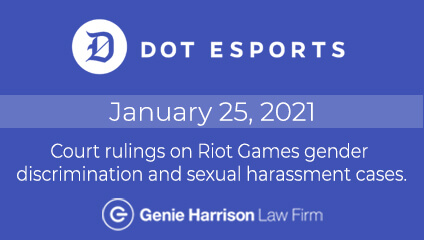Sexual Harassment in the Workplace and What You Should Do If You Are Being Harassed
By Rebecca J Sobie and Genie Harrison
Sexual harassment at work is common and it almost always leads to devastating consequences for the victim, including fear, humiliation, anxiety, depression, inability to function well at work and in life, problems in relationships, and loss of self-esteem. You have the right to be free from sexual harassment at work that creates a hostile environment.
What Constitutes Sexual Harassment?
In general, sexual harassment can be any number of actions including unwanted visual, verbal or physical conduct that is sexual in nature, requests for sexual favors or exposure to offensive conduct. Harassment may take place at work or anywhere connected with work, including during business trips, breaks (on or off premises) and company parties.
Employees have a right to work in environments that are free from offensive touching, gestures, speech and displays. Harassment goes far beyond slurs, pornography, assault, repeated sexual propositions, and the like. For instance, sexual harassment can include leering, staring, stalking, threats, sexual gestures, displays of sexually explicit objects, pictures, cartoons, graffiti, posters, graphic e-mails and texts and jokes.
Harassment also encompasses sexual advances, propositions, innuendos, offers of employment benefits in exchange for sexual favors, actual or threatened retaliation after refusing sexual advances, and unwanted touching such as kissing, hugging, grabbing, tickling, impeding or blocking movement and assault. Verbal harassment may include foul or obscene language, derogatory comments, gender-specific slurs, explicit discussions regarding sexual activities, and comments about other people’s physical attributes.
“Harassing” speech is not required to be obscene or threatening. The law can also punish the use of political statements, legitimate art with offensive images such as nudity, religious proselytizing, sexually themed jokes, and other kinds of speech that are based on characteristics such as race, gender, national origin, marital status, sexual orientation, political affiliation, and other areas. For instance, the workplace display of a nude painting by Renoir, although it might otherwise carry artistic value, could be construed as harassing conduct if it is found to be offensive.
In addition, a “hostile work environment” may be created by either direct harassment deriving from work, when someone witnesses harassment committed against another worker, or when a worker is impacted by favoritism of other workers based on a protected classification, such as sex, or based on a sexual relationship.
Who Is Protected?
The laws protect employees, independent contractors and job applicants from sexual harassment, in addition to gender harassment, harassment based on pregnancy, childbirth, breastfeeding and/or related medical conditions, and other covered characteristics.
What Should You Do If You Are Being Harassed?
It is important to immediately report any suspected harassing conduct to an immediate supervisor, human resources representative, or an appropriate member of management. An employer has a duty to take immediate and corrective action when the employer knew or should have known of the harassment by a co-worker. If the harasser is a supervisor, the employer is strictly responsible for the conduct and damages, but you should still report the harassment.
Keep a log and evidence, like the emails, photos of drawings, etc., of the harassing conduct. Include dates, places, witnesses and details about what was said, using the exact words that were said as often as possible. Be careful about recording any conversations without all participants’ prior knowledge and approval because California law makes surreptitious recording without the consent of all parties, in circumstances where there is a reasonable expectation of privacy, a crime.
Be prepared to provide a chronology or log of the harassment and the evidence of the harassment that you have gathered to any attorney you contact.
What Are an Employer’s Duties?
California employers must take all reasonable steps to prevent harassment from occurring, including implementation of an anti-harassment policy, supervisor training, and visible display of a poster with information on harassment and other laws, including the nature, illegality, and legal remedies applicable to sexual harassment. For businesses with 50 or more employees, California’s Fair Employment and Housing Act requires two hours of training for all supervisory employees within six months of assignment, and every two years thereafter.
The employer’s responsibility to investigate may include an immediate inquiry by a qualified and impartial investigator who reviews the charges and interviews witnesses, encouragement of a written complaint, protection from potential retaliation, and appropriate corrective action including but not limited to a resolution for the complaining worker.
If such action is not taken, the employer may be strictly responsible for harassment committed by a supervisor or agent, and an employer may be negligent for harassment perpetrated by a non-supervisor.
An employer or supervisor may also not retaliate against an employee for complaining about harassment. Retaliation may include a demotion, reassignment, creation of a hostile environment, or termination.
If harassing conduct is reported to an employer and the matter is not thoroughly and properly addressed, advice of counsel can often be helpful.
Source: California Department of Fair Employment and Housing website; Eugene Volokh, What Speech Does “Hostile Work Environment” Harassment Law Restrict?, 85 Geo. L.J. 627 (1997).
CLICK HERE > for more information on sexual harassment in the workplace or at school and on the sexual harassment lawyers at the Genie Harrison Law firm.







